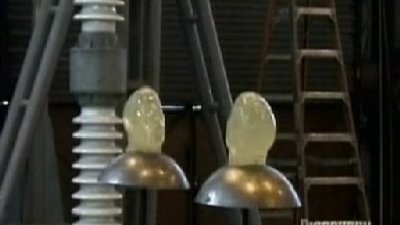
MythBusters Season 1 Episode 18 Best Electrical Myths
- May 6, 2004
The popular science television series, MythBusters, explores the world of electrical myths in its 18th episode titled "Best Electrical Myths." This episode features the team's attempt to dispel commonly held beliefs about electricity and its properties.
The first myth on the list is that a small electrical device such as a hair dryer or electric razor can pull enough amps to kill a person in a bathtub full of water. The team creates a simulated bathtub using a water-filled container and test subjects sitting inside with a device attached to a GFCI outlet. They measure the electrical current using a voltmeter and determine whether or not the myth holds true. The results are shocking and surprising, even for seasoned MythBusters fans.
Next up, the team tackles the myth that if you drop a toaster into your bathtub, you will electrocute yourself. To test this myth, they use a bathroom setup with a simulated bathtub and filled it with water. They toss a toaster into the water and measure the results with a voltmeter and other electrical measuring devices. The team also conducts a similar experiment with a hair dryer to compare results.
Another myth put to the test is the belief that sharks can detect electrical fields and that this is the reason for their attacks on humans. The team builds a special cage to test this hypothesis, with electrodes placed inside the cage to stimulate electrical fields. Then they attract sharks to the cage and observe their behavior. The team analyzes the data to determine whether the myth is true or false.
Another myth that the MythBusters team tackles in this episode is that all metals are conductive, and therefore, should not be used in certain electrical settings. They use a range of metals, from gold to aluminum, to determine which ones can conduct electricity the best. They also simulate an emergency scenario in which a person gets stuck in an elevator with a live wire and must hold onto a metal rod to avoid being electrocuted. The team tests different metals to see which one is the safest to hold on to in this kind of situation.
The MythBusters team also sets out to test the idea that lightning will always choose the highest point to strike. They build a model of a house and install a lightning rod on the roof, and measure where the lightning strikes. They also create a metal pole that reaches higher than the lightning rod to see if lightning strikes the higher target instead.
Finally, in this episode, the team explores the myth that if you pee on an electric fence, you will be electrocuted. They set up an electric fence and measure its electrical output, then test this myth by having one of their own team members pee on the fence. The results are both amusing and enlightening.
"Best Electrical Myths" is a fascinating episode that educates viewers on the truth behind common electrical myths. With their signature blend of humor and scientific rigor, the MythBusters team demonstrates their ability to test and debunk some of the most widely held beliefs about electricity. After watching this episode, viewers will have a clearer understanding of how electricity works and how to stay safe around it.
